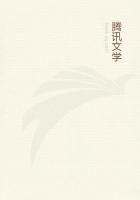Preferred Habitat - Springy ground, low meadows, swamps, river banks, ditches.
Flowering Season - April-June.
Distribution - Carolina to Iowa, the Rocky Mountains, and very far north.
Not a true marigold, and even less a cowslip, it is by these names that this flower, which looks most like a buttercup, will continue to be called, in spite of the protests of scientific classifiers.Doubtless the first of these folk-names refers to its use in church festivals during the Middle Ages as one of the blossoms devoted to the Virgin Mary.
"And winking Mary-buds begin To ope their golden eyes,"sing the musicians in "Cymbeline." Whoever has seen the watery Avon meadows in April, yellow and twinkling with marsh marigolds when "the lark at heaven's gate sings," appreciates why the commentators incline to identify Shakespeare's Mary-buds with the Caltha of these and our own marshes.
Not for poet's rhapsodies, but for the more welcome hum of small bees and flies intent on breakfasting do these flowers open in the morning sunshine.Nectar secreted on the sides of each of the many carpels invites a conscientious bee all around the center, on which she should alight to truly benefit her entertainer.
Honey bees may be seen sucking only enough nectar to aid them in storing pollen; bumblebees feasting for their own benefit, not their descendants'; little mining bees and quantities of flies also, although not many species are represented among the visitors, owing to the flower's early blooming season.Always conspicuous among the throng are the brilliant Syrphidae flies -gorgeous little creatures which show a fondness for blossoms as gaily colored as their own lustrous bodies.Indeed, these are the principal pollinators.
Some country people who boil the young plants declare these "greens" are as good as spinach.What sacrilege to reduce crisp, glossy, beautiful leaves like these to a slimy mess in a pot! The tender buds, often used in white sauce as a substitute for capers, probably do not give it the same piquancy where piquancy is surely most needed - on boiled mutton, said to be Queen Victoria's favorite dish.Hawked about the streets in tight bunches, the marsh-marigold blossoms - with half their yellow sepals already dropped - and the fragrant, pearly-pink arbutus are the most familiar spring wild flowers seen in Eastern cities.
COMMON MEADOW BUTTERCUP; TALL CROWFOOT; KINGCUPS; CUCKOO FLOWER;GOLDCUPS; BUTTER-FLOWERS; BLISTER-FLOWERS(Ranunculus acris) Crowfoot family Flowers - Bright, shining yellow, about 1 in.across, numerous, terminating long slender footstalks.Calyx of 5 spreading sepals;corolla of 5 petals; yellow stamens and carpels.Stem: Erect, branched above, hairy (sometimes nearly smooth), 2 to 3 feet tall, from fibrous roots.Leaves: In a tuft from the base, long petioled, of 3 to 7 divisions cleft into numerous lobes; stem leaves nearly sessile, distant, 3-parted.
Preferred Habitat - Meadows, fields, roadsides, grassy places.
Flowering Season - May-September.
Distribution - Naturalized from Europe in Canada and the United States; most common North.
What youngster has not held these shining golden flowers under his chin to test his fondness for butter? Dandelions and marsh-marigolds may reflect their color in his clear skin too, but the buttercup is every child's favorite.When "Cuckoo-buds of yellow hue Do paint the meadows with delight,"daisies, pink clover, and waving timothy bear them company here;not the "daisies pied," violets, and lady-smocks of Shakespeare's England.How incomparably beautiful are our own meadows in June!
But the glitter of the buttercup, which is as nothing to the glitter of a gold dollar in the eyes of a practical farmer, fills him with wrath when this immigrant takes possession of his pastures.Cattle will not eat the acrid, caustic plant - a sufficient reason for most members of the Ranunculaceae to stoop to the low trick of secreting poisonous or bitter juices.
Self-preservation leads a cousin, the garden monk's hood, even to murderous practices.Since children will put everything within reach into their mouths, they should be warned against biting the buttercup's stem and leaves, that are capable of raising blisters."Beggars use the juice to produce sores upon their skin," says Mrs.Creevy.A designer might employ these exquisitely formed leaves far more profitably.
This and the bulbous buttercup, having so much else in common, have also the same visitors."It is a remarkable fact," says Sir John Lubbock, "as Aristotle long ago mentioned, that in most cases bees confine themselves in each journey to a single species of plant; though in the case of some very nearly allied forms this is not so; for instance, it is stated on good authority (Muller) that Ranunculus acris, R.repens, and R.bulbosus are not distinguished by the bees, or at least are visited indifferently by them, as is also the case with two of the species of clover." From what we already know of the brilliant Syrphidae flies' fondness for equally brilliant colors, it is not surprising to find great numbers of them about the buttercups, with bees, wasps, and beetles - upwards of sixty species.Modern scientists believe that the habit of feeding on flowers has called out the color-sense of insects and the taste for bright colors, and that sexual selection has been guided by this taste.
The most unscientific among us soon finds evidence on every hand that flowers and insects have developed together through mutual dependence.















